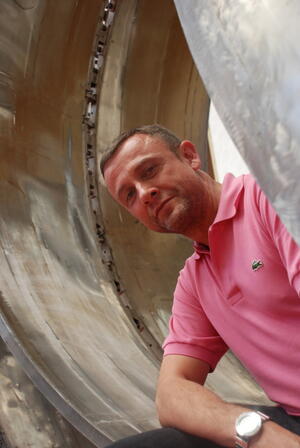It's a superconducting world
It is a rare privilege, at this stage of the program, to have a real touch and feel experience of what ITER is going to be. Most people within the ITER Organization (IO) relate to the machine through computer models, graphs, layouts and blueprints. Arnaud Devred, the Superconductor Systems and Auxiliaries section leader, is one of the few who is already involved in the actual, industrial, making of the machine. "Half of my time, since I've joined the IO last summer, is devoted to visiting Domestic Agencies and factories in China, Europe, Japan, Korea, Russia or the USA where production of superconducting components will soon be starting."
Superconductivity has been Devred's realm ever since he graduated from Supelec, one of the most prestigious and selective of French "Grandes ecoles". His first professional experience was with the ill-fated Superconducting Super Collider (SSC): "I worked for that program for 6 and a half years, first with the design team at Berkeley, then on site at Waxahachie, Texas. When the project was cancelled in 1993, the US had already invested nearly two billion dollars, and the first 12 miles of the projected 64 miles tunnel had been dug — this taught me a lot about how politics can ruin a very promising scientific project..."
Managing a European Activity on niobium-tin technology at CEA-Saclay, while commuting to CERN for more than 10 years to assist in the prototyping and the production follow up of niobium-titanium magnets for the Large Hadron Collider (LHC) have made up for that first, unfortunate though enriching experience.
Arnaud Devred brings to ITER not only his expertise in superconducting science and technology but an acute perception of the industrial challenges to be faced: "Niobium-tin current production is in the order of 15 tons per year; ITER will need more than 500 tons. This means we have to help the industry develop considerable new capacities."
Recently, Arnaud Devred rode a train for 16 hours to get from Moscow to a large nuclear facility that has been adapted "at a great expense", to deliver superconducting components for ITER (see article in this issue). "The industrial machine is gaining momentum," says the French-born scientist. "Nothing is likely to stop it."


